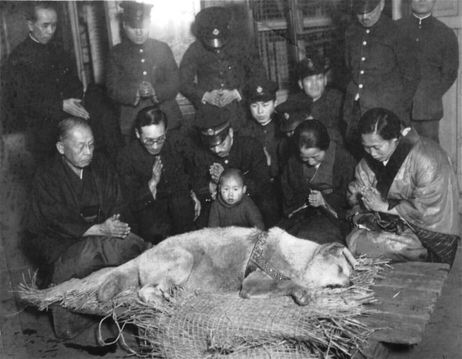Ueno and Hachikō quickly developed an adorable daily routine. Every day, Ueno would say goodbye to Hachikō at his front door and go to work. Every evening, Hachikō had worked out, Ueno would arrive at the exact same time on a train at the nearby Shibuya Station. So Hachikō decided that Shibuya Station was a great place to be in the evenings. He showed up precisely when Ueno's train was due every single day, then excitedly greeted his master and walked him home.
 |
| Shibuya Station looks like a dangerous spot for a dog to wait |
He did the same thing the next day. Then the next day. Then the next. Somewhere along the way, Ueno's gardener adopted the dog as his own, but it did nothing to stop its routine. Every day, at the moment the evening train was due, Hachikō would appear at Shibuya station to wait for his old friend. Every. Single. Day.
Seven years later, Hirokichi Saito, one of Ueno's former students, recognized the dog when he happened to be at the station at the right time. He tailed Hachikō (no pun intended) to his home, where he met the gardener, who explained the whole story. Saito, deeply moved, published several articles about the dog's loyalty, holding it up as an example for all citizens of Imperial Japan to emulate.
One of these articles caught on in a big way, and suddenly Hachikō was a national sensation. Daily commuters brought treats for Hachikō, and people came to Shibuya Station specifically to see the famously loyal dog. All told, Hachikō visited the station every day for nine years, nine months and fifteen days. Finally, in March of 1935, Hachikō succumbed to cancer.
 |
| And yes, he had an actual funeral. |
If this story sounds familiar to you, it's probably because there was a Richard Gere movie called Hachi and that episode of Futurama that always makes you cry, both of which took their inspiration from Hachikō. To this day, we recognize a little dog from Tokyo with statues, films and TV shows, all because he just couldn't stop loving someone, even after almost a decade of not seeing him.
Holy shit.

No comments:
Post a Comment